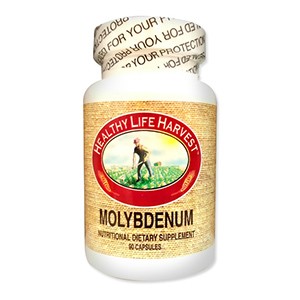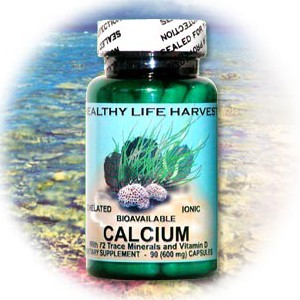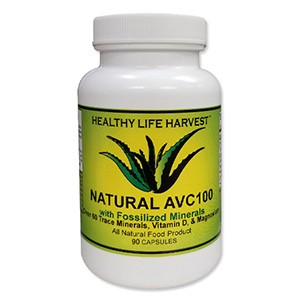A Potent Anti-Viral, Anti-Migraine & Anti-Depressant.
100 grams dehydrated fruit pulp of Amazon rainforest Camu-camu bush. Each teaspoon contains 50-60 times more Vitamin C than an orange. High in bioflavanoids. Fruit is gathered along waterways of rainforest, picked, flash frozen. Later thawed, liquefied and spray dried without heat to protect the Vitamin C.
Anti-depression Properties
Camu-Camu (Myrciaria dubia) is the name of a bush which grows in the Amazonian rain forest of Peru. The camu-camu bush produces a fruit with the same name which contains powerful phytochemicals with health benefits, including the amino acids serine, valine, and leucine, and more Vitamin C than any other known plant in the world. The camu-camu fruit is approximately 20 millimeters in diameter and has a purplish red skin with a yellow pulp. When it is processed (pulp removed from the seed, liquefied and dried) the resulting powder is a pale yellow.
Camu-camu fruit contains 30 to 60 times more Vitamin C than an orange. Each teaspoon of dried, powdered camu-camu has approximately 220 milligrams of ascorbic acid and small amounts of thiamine, riboflavin and niacin. It also is rich in bioflavanoids.
The camu-camu fruit has a surprising range of medicinal effects. Some of the extraordinary medicinal properties of this Amazon rain forest fruit are described by Gary Null, Ph.D., a nationally known nutritionist and researcher, (1996).
In discussing the holistic treatment of depression he lists 19 plants containing chemical compounds with antidepressant properties, in order of potency.
They are:
Pastinaca sativa (parsnip)
Myrciaria dubia (Camu-Camu)
Malpighia glabra (acerola)
Lactuca sativa (lettuce)
Amaranthus sp. (pigweed)
Portulaca oleracia (purslane)
Nasturtium officinale (berro)
Chenopodium album (lamb’s-quarters)
Cichorium endivia (endive)
Spinacia oleracea (spinach)
Brassica chinensis (Chinese cabbage)
Brassica oleracea (broccoli)
Lycopersicon esculentum (tomato)
Avena sativa (oats)
Raphanus sativus (radish)
Anethum graveolens (dill)
Phaseolus vulgaris (black bean)
Cucurbita foetidissima (buffalo
gourd)
Corchorus olitorius (Jew’s mallow)
Some have been able to gradually wean themselves off of their anti-depression prescription medication (such as Zoloft and Prozac) under medical supervision and substitute Peruvian Camu powder with no relapse into depression. Although the amount taken varies for different people, some have taken, on an empty stomach, 1/2 teaspoon of camu-camu powder in a glass of water four times daily. Others have taken one tsp. either once or twice daily. One alternative healthcare provider in New York City has had twenty patients on Zoloft and Prozac gradually wean themselves off these medications while taking camu-camu and they have succeeded in avoiding depression. Good results have also been noticed with patients who are anxious and talkative, and those with panic attacks.
Camu-Camu works wonders with A.D.D. Children
Peruvian Camu has also been part of an effective protocol for a 14 year old boy who was hospitalized for 15 months at the age of eight for suicidal depression. This boy also has learning disabilities and Attention Deficit Disorder (A.D.D.). His psychiatrists put him on 40 mg. of Prozac, 100 mg. of Ritalin, as well as Clomadine and Imiprimine, which he remained on for years, keeping him in a barely functional, drugged state. Working with an alternative medical professional, his mother withdrew him gradually from these drugs and began a protocol which included Ginkgo Biloba, high amounts of Vitamin C and B vitamins. In the last few months she has added two teaspoons of Peruvian Camu (divided dose on empty stomach with water) and one capsulea day (500 mg.) of Peruvian Maca to his protocol. She reports that since adding these two herbs her son’s immune function has improved–he gets sick less often, his mood is better – “it has smoothed him out” – and the combination of these two herbs have increased his ability to focus, i.e. his attention span has improved to 30 minutes at a time for doing school work.
Camu-camu is at the top of Null’s list of plants with medicinal effectiveness against the herpes virus. All forms of the herpes virus lie dormant at the base of the spine and become active when the immune system is stressed beyond its ability to respond effectively against pathenogens. Common stressors include emotional upsets, other illnesses, prescription drugs, insufficient rest, poor diet, menstrual periods, vaginal yeast infections, and too much sunlight on the skin. Genital herpes is usually transmitted sexually. The principal anti-viral pharmaceutical medicine is acyclovir which has unpleasant and even toxic side effects. The herpes virus takes a number of different forms and is widespread today as a public health problem in the United States. More than 50% of the U.S. population gets cold sores, which is
the result of the herpes simplex virus 1 (HSV1). Many people also suffer from shingles, which is a re-manifestation of the chicken pox virus in adulthood in a new form.
The Epstein-Barr Virus
The Epstein-Barr Virus is a common form of the herpes virus which may linger in the body
for years, raising the total viral load which the body must combat. Yet another form of the herpes virus is genital herpes which is caused by the herpes simplex virus 2. In total, more than 80% of the U.S. population suffers from some kind of herpes infection.
Null lists 19 plants which contain anti-herpetic phyto-chemicals. In order of potency they are:
Myrciaria dubia (Camu-Camu)
Malpighia glabra (acerola)
Momordica charantia (bitter melon)
Portulaca oleracea (purslane)
Phyllanthus emblica (emblic)
Rosa canina (rose)
Capsicum annum (bell pepper)
Capssicum frutescens (cayenne)
Carya glabra (pignut hickory)
Nasturtium officinale (berro)
Spinacia oleracea (spinach)
Phaseolus vulgaris (black bean)
Carya ovata (shagbark hickory)
Oenothera biennis (evening primrose)
Helianthus annuus (sunflower)
Allium schoenoprasum (chives)
Chondrus crispus (Irish moss)
Basella alba (vinespinach)
Brassica chinensis (Chin. cabbage)
References:
Null, Gary. A Woman’s Encyclopedia of Natural Healing, Seven Stories Press, New York, N.Y., 1997.
The Clinician’s Handbook of Natural Healing, Kensington Press, New York, N.Y., 1998.
COVER STORY: Read the product review on our premium blend of Peruvian Camu-Camu in a recent issue of Natural Beauty & Health magazine.
Natural Beauty & Health Magazine Product Review
“Wonderful, nearly miraculous plants, fruits, and herbs are coming to us from the Amazon rainforest, and camu-camu is one of them. These little berries are the most potent natural source of Vitamin C in the world-they contain more than 50 times as much as in the same amount of fresh orange! Two capsules of Healthy Life Harvest™’s conscientiously wildcrafted and non-heat dehydrated camu-camu contain 200mg of C. It’s also rich in phytochemicals and bioflavanoids, having strong anti-oxidant properties. And there’s more-it’s a potent anti-depressant (one of the best on the planet), and its anti-viral properties make it extremely effective against all forms of herpes. We are only starting to tap the bountiful gifts that the rainforest provides for us. I’ve been taking camu-camu for a short while, and I can feel my energy improving already!”
Written by Pearly Baker Best
Natural Health & Beauty/Nov. 2003
Healthy Life Harvest™
Wildcrafted Camu-Camu
(90 500mg capsules)
Call us TOLL FREE: 1-877-444-2563
Dear Healthy Life Harvest,
Hello, “I would love to share with you that my son is taking your Camu and Shark Oil for ADHD and he is in boarding school and the other day he called me and told me “Please send more vitamins because I have realize after one week of not having them that I am starting to get easily distracted again ” * Thanks
Tita , MOTHER in USA
Suggested Products





